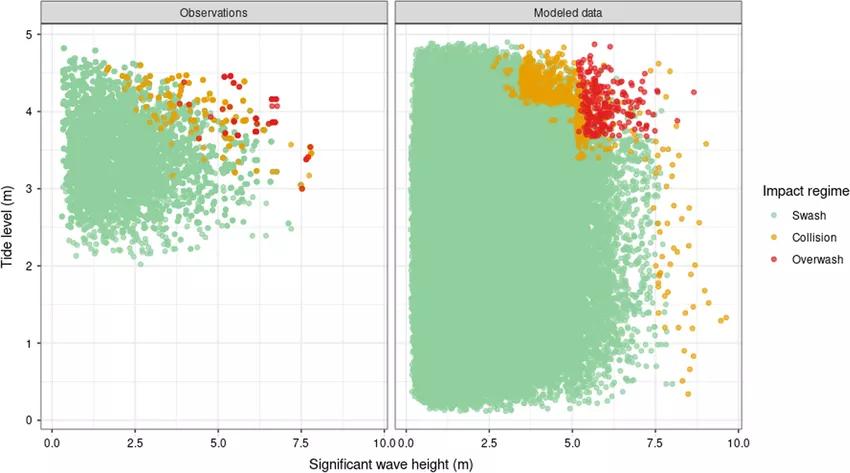Bayesian networks to predict storm impact using data from both monitoring networks and statistical learning methods
Bayesian networks are probabilistic graphical models that are increasingly used to translate hydraulic boundary conditions during storm events into onshore hazards. However, comprehensive databases that are representative of the extreme and episodic nature of storms are needed to train the Bayesian networks. Such databases do not exist for many sites and many Bayesian networks are trained on data generated by process-based models. To our knowledge, they have not been trained exclusively on observational data for storm impact modeling. This study aims to explore the performance in coastal flooding prediction of a Bayesian network exclusively based on observational data. To this end, we take the "Grande Plage" of Biarritz (South west of France) as a test case. The network is trained using data from several monitoring networks located near the study site. Because observational data about storm impact regime are limited, a second aim of this work is to propose a methodology based on statistical learning methods to complement the data about this variable. This methodology aims to select the statistical learning method with the best generalizing ability with a cross validation. Two Bayesian networks are trained, one exclusively on the observational data and one with both observational and predicted data. To compare the two networks, their performances are evaluated on the same events. We demonstrated that it is possible to predict coastal flooding risk in a qualitative manner with a Bayesian network based only on observational data with a F₁-score, a measure combining precision and recall, of 0.628. However, the predictive skill of this network is questionable for the most intense storm impact regimes which are impact and overwash regimes. Storm impact data is extended with the random forest method which showed the best generalizing ability based on cross-validation. This extension of the database led to a better Bayesian network in terms of predictive skill, with precision, recall and F₁-score 7% higher on average than for the network trained only on observational data.
A. Callens, D. Morichon, B. Liquet
- Natural Hazards, volume 115

